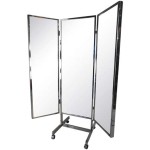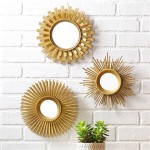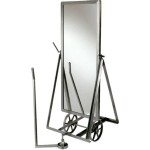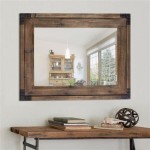How To Hang Your Mirror On The Wall
Hanging a mirror correctly is crucial for both aesthetics and safety. This guide provides a comprehensive overview of the process, covering various wall types and mirror sizes.
Assessment and Planning: Before beginning, assess the mirror's weight and dimensions. Heavy mirrors require more robust hanging methods than lighter ones. Measure the mirror's height and width to determine the ideal placement on the wall. Consider the surrounding decor and furniture when choosing a location.
Choosing the Right Hanging Hardware: The appropriate hanging hardware depends on the mirror's weight and the wall's construction. D-rings and wire are common for lighter mirrors. For heavier mirrors, consider using J-hooks or French cleats. Consult the mirror manufacturer's instructions for recommended hardware.
Understanding Wall Types: Different wall types require different fasteners. Drywall is common in most homes and requires specific anchors for heavier objects. Solid walls, such as those made of brick or concrete, require different drill bits and anchors. Identify the wall type before proceeding.
Locating Wall Studs: Hanging heavy mirrors directly on wall studs provides the most secure support. Use a stud finder to locate the studs behind the drywall. Mark the stud locations with a pencil for reference. If hanging a lighter mirror and studs are not conveniently located, appropriate wall anchors will be necessary.
Marking the Hanging Points: Once the desired location and hanging hardware are determined, mark the points on the wall where the fasteners will be installed. Use a level to ensure the markings are perfectly aligned, preventing a crooked mirror.
Installing the Hanging Hardware on the Mirror: Follow the manufacturer's instructions for installing D-rings, wire, J-hooks, or French cleats. Ensure the hardware is securely attached to the mirror frame or backing.
Drilling and Anchoring (if necessary): If not hanging directly on studs, drill pilot holes at the marked locations. Insert the appropriate wall anchors, ensuring they are flush with the wall surface. Different wall anchors are designed for different weights and wall types. Consult packaging for weight limits and proper installation techniques.
Hanging the Mirror: Carefully lift the mirror and position the hanging hardware onto the installed fasteners (screws or hooks). Ensure the mirror is securely in place before releasing it completely. Double-check the alignment with a level.
Using D-Rings and Wire: When using D-rings and wire, ensure the wire is taut but not overly tight. The wire should support the mirror without being visible from the front.
Using J-Hooks or French Cleats: J-hooks are screwed into the wall, and the mirror is hung directly onto them. French cleats consist of two interlocking pieces – one attached to the wall and the other to the mirror. The two pieces interlock, creating a secure hanging system for heavier mirrors.
Safety Precautions: When handling heavy mirrors, it is recommended to have assistance. Wear appropriate safety glasses to protect eyes from dust and debris during drilling. Always follow manufacturer instructions for both the mirror and the hanging hardware.
Dealing with Irregularly Shaped Mirrors: For irregularly shaped mirrors, the hanging method might require adaptation. Consider the weight distribution and use multiple hanging points if necessary. Consult a professional for advice if needed.
Choosing the Right Height: The ideal height for hanging a mirror depends on its purpose and the surrounding environment. A bathroom mirror should be positioned at a comfortable height for users. A decorative mirror in a living room might be hung higher to create a focal point.
Cleaning the Mirror After Installation: After installation, clean the mirror with a suitable glass cleaner to remove any fingerprints or smudges acquired during the hanging process.
Considering Lighting: The placement of lighting fixtures can impact the reflection in the mirror. Avoid placing lights directly above or below the mirror, as this can create unflattering shadows.
Adjustments and Fine-Tuning: After hanging the mirror, make any necessary adjustments to ensure it is level and securely in place. Small adjustments can be made by slightly shifting the mirror on the hanging hardware.

How To Hang A Large Or Heavy Mirror

How To Hang A Heavy Mirror The Home Depot

How To Hang A Mirror The Best Way On Drywall
:strip_icc()/coral-hanging-shelf-entryway-cb35ed98-0829c2dc8e1b40e18fe1c78a3742502b.jpg?strip=all)
How To Hang A Heavy Mirror For Statement Piece That Won T Budge

How To Hang A Heavy Full Length Leaner Mirror On The Wall House Of Hepworths

How To Hang A Heavy Mirror Lowe S
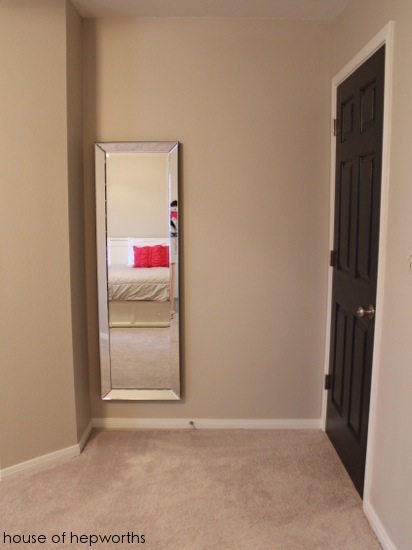
How To Hang A Heavy Full Length Leaner Mirror On The Wall House Of Hepworths

How To Hang A Mirror With Ease Framed Frameless Heavy Mirrors And More Real Homes

Easy For Hanging Mirrors And Frames Perfectly Every Time

How To Hang A Heavy Mirror Lowe S


